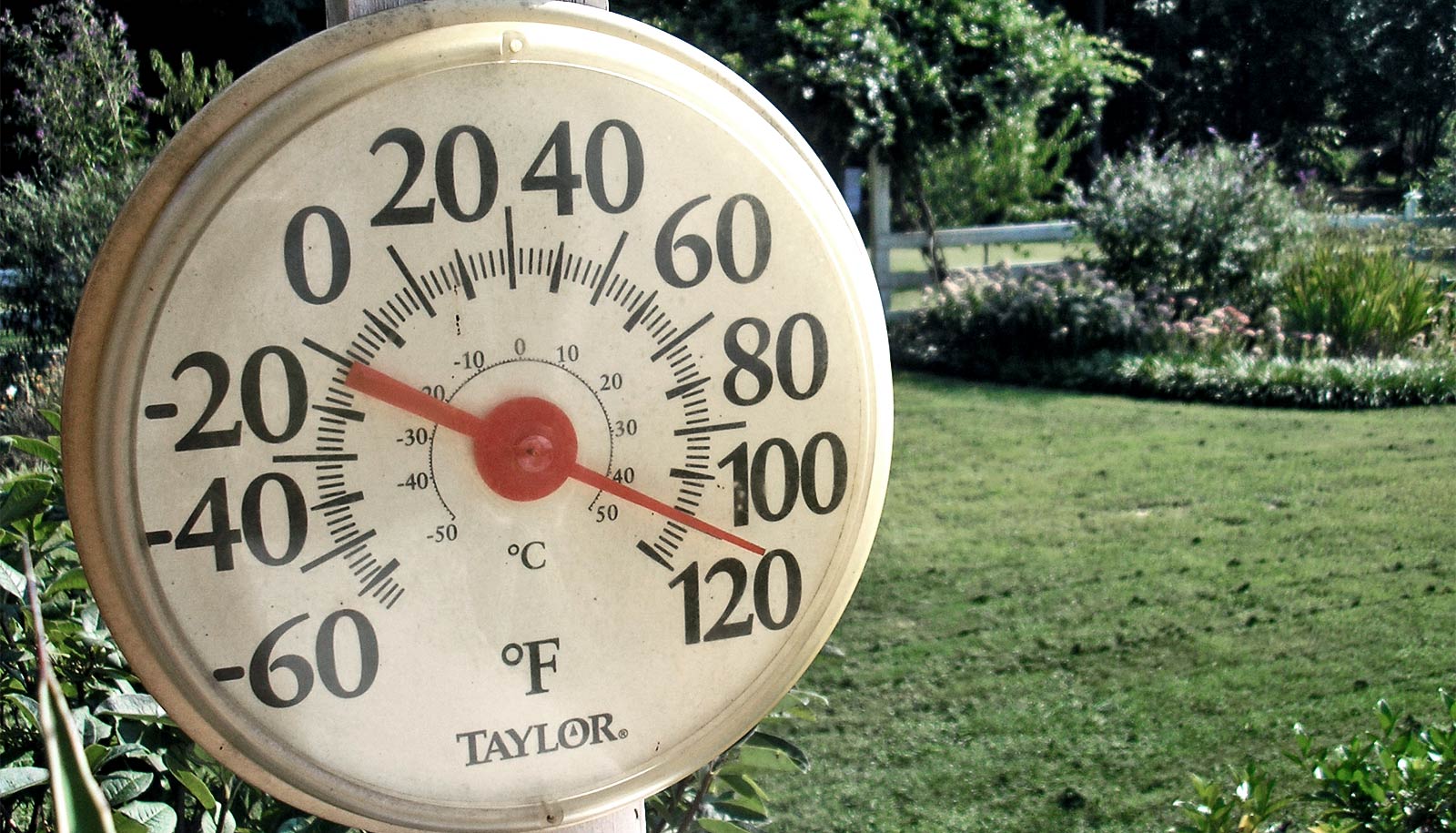Using minerals from ancient soils, researchers are reconstructing Earth’s climate from 55 million years ago.
Their findings will help them to better assess the future of our climate.
Between 57 and 55 million years ago, the geological epoch known as the Paleocene ended and gave way to the Eocene. At that time, the atmosphere was essentially flooded by the greenhouse gas carbon dioxide, with concentration levels reaching 1,400 ppm to 4,000 ppm.
So it’s not hard to imagine that temperatures on Earth must have resembled those of a sauna. It was hot and humid, and the ice on the polar caps had completely disappeared.
The Earth’s climate in that era provides researchers with an indication as to how today’s climate might develop. While pre-industrial levels of atmospheric CO2 stood at 280 ppm, today’s measure 412 ppm. Climate scientists believe that CO2 emissions generated by human activity could drive this figure up to 1,000 ppm by the end of the century.
Using tiny siderite minerals in soil samples taken from former swamps, researchers reconstructed the climate that prevailed at the end of the Paleocene and in the early Eocene.

Ancient Earth’s temperature
The siderite minerals formed in an oxygen-free soil environment that developed under dense vegetation in swamps, which were abundant along the hot and humid coastlines in the Paleocene and Eocene.
To reconstruct the climatic conditions from the equator to the polar regions, the researchers studied siderites from 13 different sites. These were all located in the northern hemisphere, covering all geographical latitudes from the tropics to the Arctic.
“Our reconstruction of the climate based on the siderite samples shows that a hot atmosphere also comes with high levels of moisture,” says lead author Joep van Dijk, who completed his doctorate in ETH Zurich Professor Stefano Bernasconi’s group at the Geological Institute.

Accordingly, between 57 and 55 million years ago, the mean annual air temperature at the equator where Colombia lies today was around 41 °C (105.8 F). In Arctic Siberia, the average summer temperature was 23 °C (73.4 F).
Using their siderite “hygrometer”, the researchers also demonstrated that the global moisture content in the atmosphere, or the specific humidity, was much higher in the Paleocene and Eocene eras than it is today. In addition, water vapor remained in the air for longer because specific humidity increased at a greater rate than evaporation and precipitation. However, the increase in specific humidity was not the same everywhere.
Since they had access to siderite from all latitudes, the researchers were also able to study the spatial pattern of the specific humidity. They found that the tropics and higher latitudes would have had very high humidity levels.
The researchers attribute this phenomenon to water vapor that was transported to these zones from the subtropics. Specific humidity rose the least in the subtropics. While evaporation increased, precipitation decreased. This resulted in a higher level of atmospheric water vapor, which ultimately reached the poles and the equator. And the atmospheric vapor carried heat along with it.
Climate scientists still observe the flow of water vapor and heat from the subtropics to the tropics today. “Latent heat transport was likely to have been even greater during the Eocene,” van Dijk says. “And the increase in the transport of heat to high latitudes may well have been conducive to the intensification of warming in the polar regions,” he adds.
From past to future
These new findings suggest that today’s global warming goes hand in hand with increased transport of moisture, and by extension heat, in the atmosphere. “Atmospheric moisture transport is a key process that reinforces warming of the polar regions,” van Dijk explains.
“Although the CO2 content in the atmosphere was much higher back then than it is today, the increase in these values took place over millions of years,” he points out. “Things are different today. Since industrialization began, humans have raised the level of atmospheric CO2 by almost 50% over a period of just 170 years,” he says.
In the past, animals and plants had much more time to adapt to the changing climatic conditions. “They simply can’t keep up with today’s rapid development,” van Dijk says.
Finding the siderites was not easy. For one thing, the minerals are tiny, plus they occur solely in fossil swamps, which today are often found only several kilometers (1 km is 0.6 miles) below the Earth’s surface. This made it difficult or even impossible for the researchers to dig up siderites themselves.
“We made several expeditions to sites where we believed siderites might occur but we found them at only one of those locations,” van Dijk says.
Fortunately, study coauthors Tim White of Penn State owns the world’s largest collection of siderites.
The research appears in Nature Geoscience. Additional researchers from CASP in Cambridge contributed to the work.
Source: ETH Zurich


